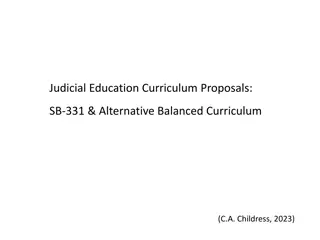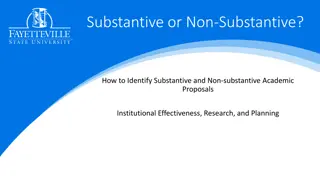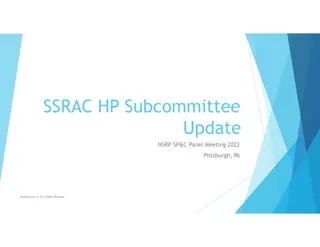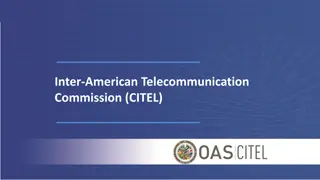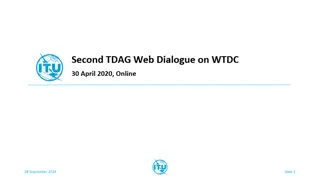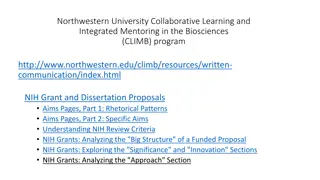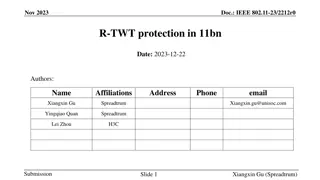
Enhancing SAT Solvers with Decision Heuristics and Strategies
Explore how to optimize SAT solvers using decision heuristics and strategies such as measuring variable activity, adding clause information, implementing deletion strategies, preprocessing techniques, and smart BCP order heuristics. Learn how these enhancements can improve the efficiency and performance of SAT solving algorithms.
Download Presentation

Please find below an Image/Link to download the presentation.
The content on the website is provided AS IS for your information and personal use only. It may not be sold, licensed, or shared on other websites without obtaining consent from the author. If you encounter any issues during the download, it is possible that the publisher has removed the file from their server.
You are allowed to download the files provided on this website for personal or commercial use, subject to the condition that they are used lawfully. All files are the property of their respective owners.
The content on the website is provided AS IS for your information and personal use only. It may not be sold, licensed, or shared on other websites without obtaining consent from the author.
E N D
Presentation Transcript
Project proposals Project includes: Reading Implementation Evaluation Short presentation Submission of results
EduSAT A SAT solver that is easy to understand and extend ~800 LOC Supports Incremental SAT via assumptions Various decision heuristics
Your project with EduSAT Optimize as much as you can In the next few slides we will see various suggestions
Change decision heuristic Measure the activity of variables in learning new clauses relative to others, when the variable is assigned* * Based on: Learning Rate Based Branching Heuristic for SAT Solvers (SAT 2016)
Add LBD information about clauses LBD ( Glue ) -- the # of decision levels in the clause*. Use it to improve Decision strategy Deletion strategy clause shrinking * Predicting Learnt Clauses Quality in Modern SAT Solvers, Gilles Audemard, Laurent Simon, IJCAI09
Add deletion strategy Deletion of low-activity conflict clauses. Requires: Compute activity of clauses based on various measures. Based on activity of variables in the clause Based on LBD: the # of decision levels in the conflict clause. Activate deletion periodically.
Add preprocessing Remove satisfied clauses at level 0 Non-increasing variable elimination, Example: eliminate ?3via resolution of all pairs ?3, ?3: Before: (?1?2?3) (?4?3) (?5?3) (x1?3) After: (?1x1) ?1?2?5 x1?4 (?4?5) One less variable One less clause
BCP order Smart heuristics for BCP order: e.g., Variables with higher activity score BFS / DFS among variables According to the LBD information: if the learned clause is bad , re-run BCP with a different order. Perhaps: process according to the highest decision level within the clause.
Minimization of conflict clauses ?????? ?3 = ?4, ?????? ?6 = ?5, Local / General implication graph x10=0@3 4 x2=1@6 x5=1@6 Learnt Conflict clause: (x10 :x4 x11) 1 4 3 6 6 Decision x4=1@6 x1=1@6 3 2 5 5 conflict 2 x6=1@6 x3=1@6 ?10 ?11 x9=0@1 x11=0@3 ?11 ?10 or, Clause minimization: Drop ?11 10
Learnt Conflict Clauses, and minimization More generally: if we have a c.c. ? = (?0 ??), and ... all reverse paths on the implication graph hit ? literals... x10=0@3 4 x5=1@6 4 6 6 x4=1@6 5 5 conflict x6=1@6 ?? ? ?? ?? ?? ?? ??=0@3 ?? ? or, ?? ?? ?? ?? Clause minimization: Drop ?? ?? ? 11
Learn more In some applications (Bounded Model Checking, Planning) there is a lot of symmetry. e.g., ? ?0 ?=0..?? ??,??+1 ?(??) If there is a conflict between action a in step 1 and b in step 3, then there is also a conflict between them in steps 2 and 4, 3 and 5, Learn such clauses only if they are of high value Compute activity, LBD Attach short expiration date for them. * Accelerating Bounded Model Checking of Safety Formulas. /Formal Methods in System Design, Vol. 24(1), Vol. 24(1), Jan 2004
Extend to support pseudo-Boolean constraints Direct treatment of cardinality constraints.
Test the value of incrementality Incremental solvers benefit from Sharing conflict clauses Sharing heuristic information Depending on the increment, the heuristic information can perhaps be harmful. Can we find a test for when to activate it ? Steps: Take benchmarks from the incremental SAT competition Also, fabricate incremental instances with varying levels of change. Add control to reset each heuristic info. Check effect. Measure change between instances, per variable. What happens if we reset the heuristic info of those variables that changed.

